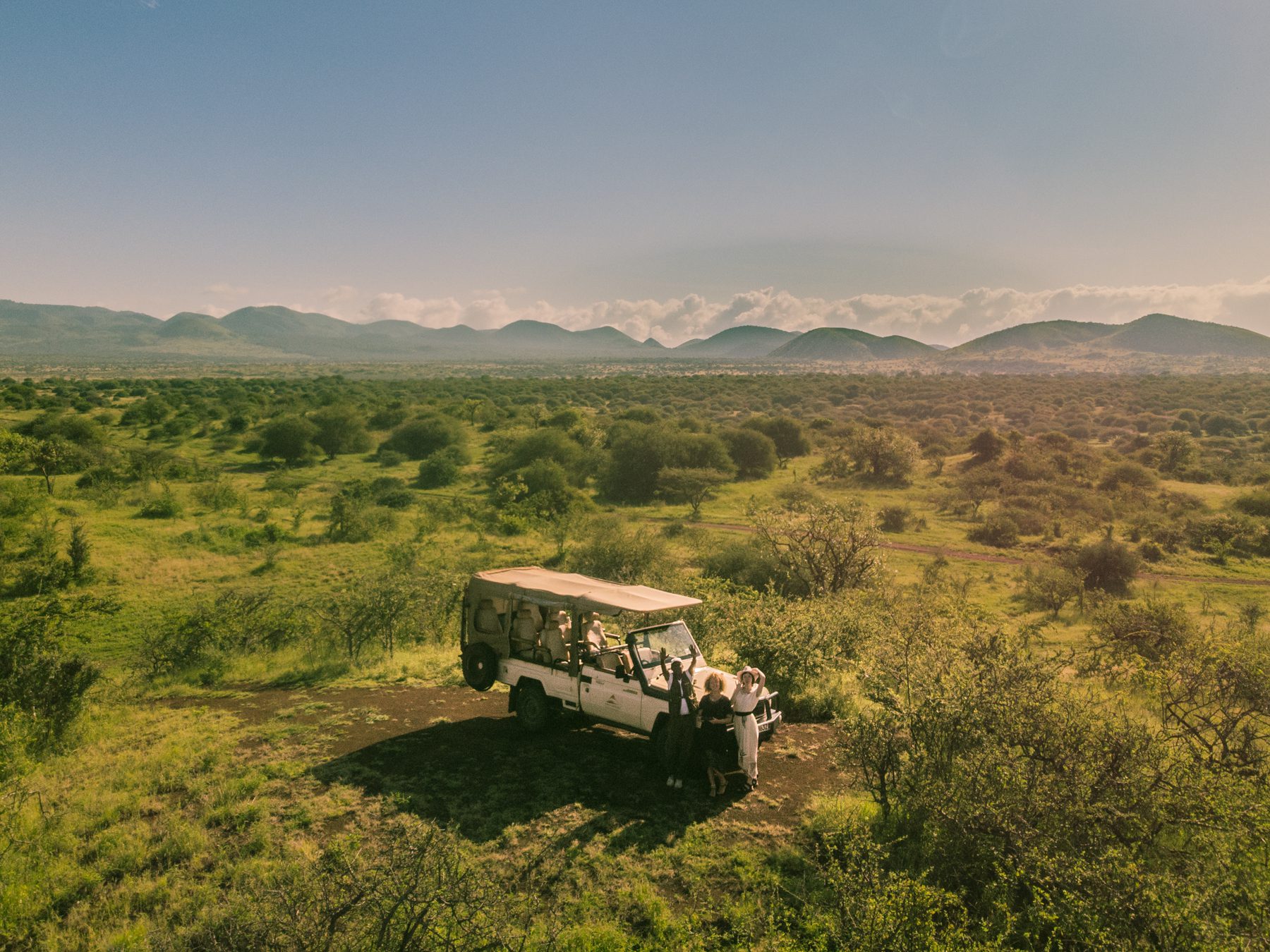For many American travelers, Kenya Safari Holidays from the USA embodies the classic image of Africa vast golden savannahs dotted with acacia trees, dramatic skies, and herds of wildlife roaming free. A trip here is not just a vacation; it is an immersion into a world where nature still reigns supreme. From the thundering hooves of wildebeest during the Great Migration in the Masai Mara to the unforgettable sight of elephants silhouetted against Mount Kilimanjaro in Amboseli, Kenya offers moments that stay with you forever.
Kenya safari holidays from USA have become increasingly popular as more Americans look for travel experiences that combine adventure, authenticity, and comfort. Kenya is perfectly positioned as one of Africa’s top safari countries, and its world-class lodges, expert guides, and diverse landscapes make it one of the best choices for U.S. travelers planning their first or even repeat safari.
What sets Kenya apart is not just the wildlife but also the incredible variety of experiences. In a single journey, you can explore savannahs teeming with lions and elephants, glide past hippos on a boat ride in Lake Naivasha, watch flamingos at Lake Nakuru, and finish your holiday on the powder-soft beaches of Diani or Zanzibar. Add to that the cultural richness of the Maasai and Samburu people, and it becomes clear why Kenya continues to capture the imagination of travelers from across the globe.
The Ideal Number of Days for a Kenya Safari
One of the first questions most U.S. travelers ask when planning their Kenya safari holiday is: “How many days do I need?” The answer depends on how immersive you want your adventure to be. Because flights from the United States to Kenya are long — often 14 to 18 hours depending on your route — most American visitors find that staying at least a week makes the trip worthwhile.
For those with tighter schedules, a 5–6 day safari can still offer highlights such as the Masai Mara or Amboseli, but it may feel a little rushed. If you want a deeper experience, 7–12 days is the sweet spot. This allows time to explore multiple national parks, see a wide variety of landscapes, and balance wildlife adventures with moments of relaxation. Many first-time U.S. travelers find that 10 days Kenya Safaris is the perfect balance enough to cover the Masai Mara, Amboseli, and perhaps a lake or coastal extension, without feeling overwhelmed.
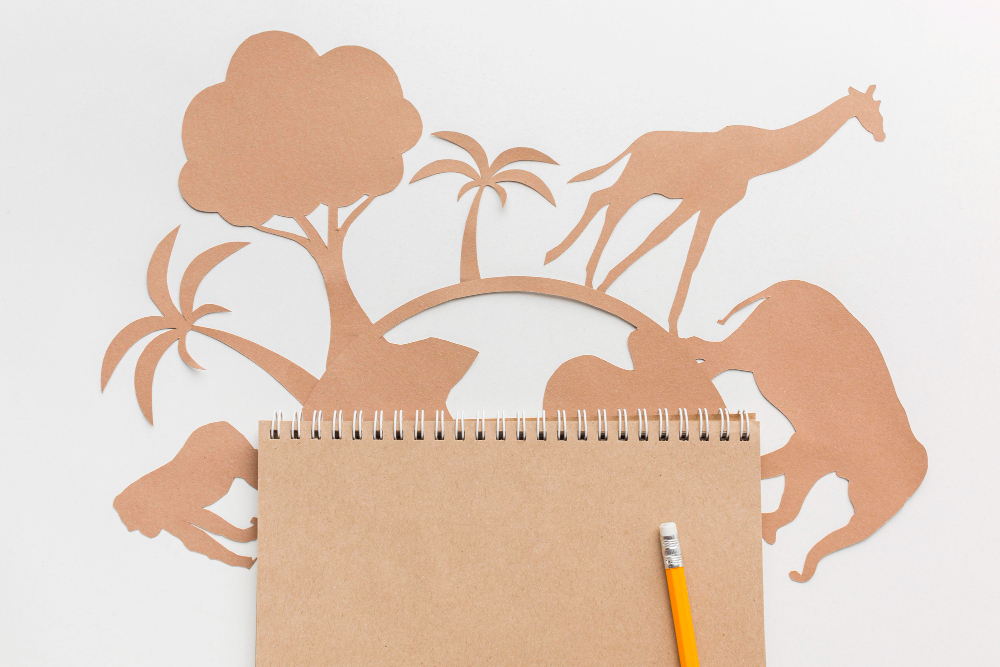
For those who dream of really soaking it all in, a two-week safari holiday can combine Kenya’s highlights with neighboring Tanzania or Uganda. These extended adventures are ideal for those with flexible schedules who want to see the Great Migration in both the Masai Mara and the Serengeti, or add gorilla trekking in Uganda to their trip.
The key is to remember that a safari is not just about checking off animals from a list. It is about experiencing the rhythm of the African wilderness — the stillness of a sunrise game drive, the thrill of spotting a leopard in the trees, or the sound of lions roaring in the night. That kind of magic deserves time, and U.S. travelers who give themselves enough days in Kenya often return home with stories that feel almost dreamlike.
A Closer Look at a 10-Day Kenya Safari Itinerary
When planning Kenya safari holidays from USA, it is important to maximize your time on the ground. Because of the distance, most travelers prefer an itinerary that blends adventure with relaxation. A 10-day itinerary offers the perfect balance, giving you enough time to explore Kenya’s most famous parks while also experiencing the coast. Here’s how a typical journey unfolds.
Days 1–2: Arrival in Nairobi – First Encounters with Wildlife
After a long-haul flight from the United States, most visitors arrive in Nairobi either in the evening or morning. Kenya Airways offers a direct flight from New York to Nairobi, while many other U.S. cities connect through European or Middle Eastern hubs. On arrival, you are met by your safari guide and transferred to your hotel for a rest.
For those who want to ease into their adventure, a visit to Nairobi National Park is an unforgettable introduction. Just a short drive from the city center, it is the only national park in the world located within a capital city. Imagine spotting lions, giraffes, buffalo, and rhinos with the Nairobi skyline in the background it is the perfect way to start your journey. Alternatively, you can explore the Giraffe Centre or David Sheldrick Elephant Orphanage, popular with families and first-time travelers.
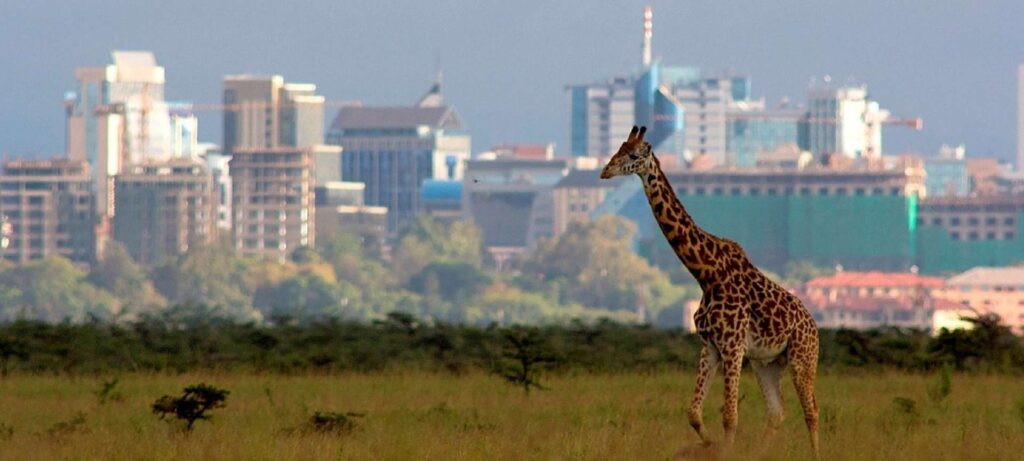
Days 3–5: The Masai Mara – The Safari Capital of the World
From Nairobi, your journey continues to the Masai Mara, Kenya’s most famous reserve and the crown jewel of East African safaris. Whether you travel by road (a scenic 5–6 hour drive) or by air (a one-hour flight), the sense of anticipation builds as you enter the rolling savannahs where the Big Five roam freely.
Over the next three days, you’ll enjoy a mix of morning and afternoon game drives. The Masai Mara is home to incredible wildlife densities, making sightings almost guaranteed. Lions bask lazily in the sun, cheetahs chase gazelles across the plains, and elephants move in herds across the landscape. If you visit between July and October, you’ll witness the Great Wildebeest Migration, one of nature’s greatest spectacles, as over a million animals cross the Mara River in search of greener pastures.
Many U.S. travelers also add a hot air balloon safari here, drifting silently above the plains at sunrise before descending for a champagne breakfast in the bush. Evenings are spent in luxury or midrange lodges, where stories are shared around the campfire under star-filled skies.
Days 6–7: Amboseli – Elephants and Kilimanjaro Views
From the Mara, you head south to Amboseli National Park, a smaller but equally iconic destination. Known for its huge elephant herds and the dramatic backdrop of Mount Kilimanjaro, Amboseli offers a completely different safari experience. Here, game drives focus on elephants wading through swamps, predators prowling the plains, and birdlife that adds vibrant color to the scenery.
The real magic of Amboseli lies in the early mornings and evenings when Kilimanjaro’s snow-capped peaks reveal themselves. For photographers, this is the ultimate shot: elephants walking across dusty plains with Africa’s highest mountain rising in the background. Spending two nights here allows enough time to enjoy both the wildlife and the landscapes without feeling rushed.
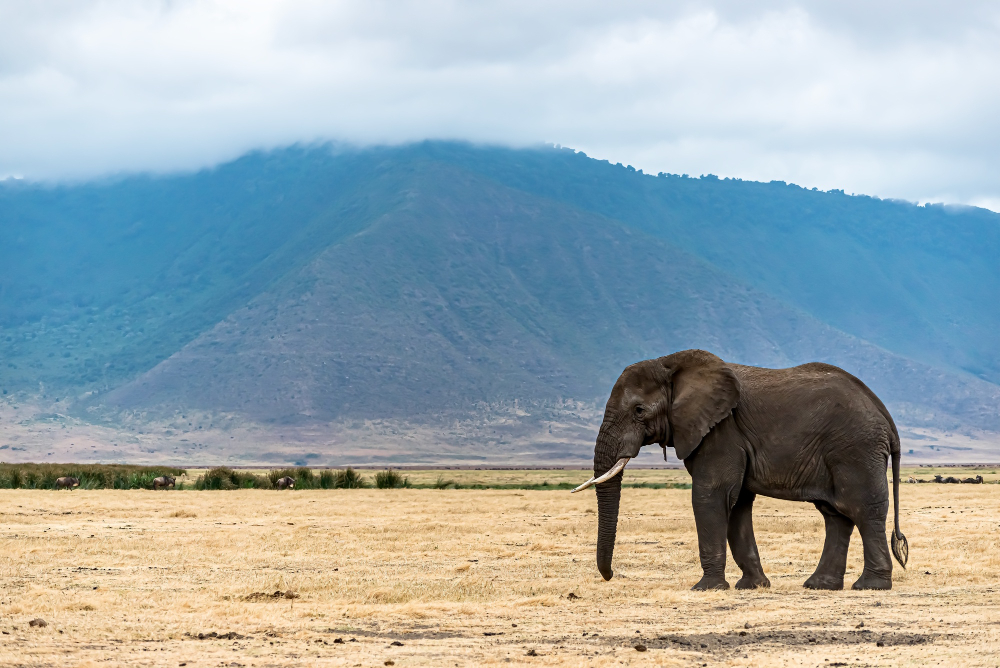
Day 8: Lake Naivasha or Lake Nakuru – A Different Kind of Safari
After the savannahs of Amboseli and the Mara, many itineraries include a stop at one of Kenya’s lakes. Lake Naivasha is famous for boat rides where you can see hippos, pelicans, and fish eagles. It also offers a chance to walk on Crescent Island, mingling with giraffes and antelopes on foot.
Alternatively, Lake Nakuru National Park is a prime destination for rhino sightings. Both black and white rhinos are well protected here, and the park also boasts leopards, flamingos, and picturesque waterfalls. A day at either lake provides a refreshing contrast to the plains.
Days 9–10: The Kenya Coast – Relaxation After Adventure
No Kenya safari holiday from USA is complete without a taste of the coast. After days of adventure, most travelers fly from Nairobi or directly from the parks to the Indian Ocean beaches. Diani Beach, with its soft white sands and turquoise waters, is a favorite. Mombasa also offers cultural history with Fort Jesus and Old Town, while Zanzibar across the border combines spice tours and Swahili culture with pristine beaches.
The final two days are spent unwinding, enjoying the warm waters of the Indian Ocean, or indulging in spa treatments, snorkeling, and beachside dining. For many U.S. visitors, this combination of safari and beach is what makes Kenya truly special the thrill of the wild paired with the serenity of the coast.
10 Best Kenya Safari Holidays from the USA
10-Day Classic Kenya Safari Experience
8 Days-Kenya Big Five Ultimate Safari
7 Days Kenya Major Parks Safari
8 Days Luxury Kenya Safari & Beach
What U.S. Travelers Love Most
Clients from the United States often highlight the diversity of a 10-day safari in Kenya. In just over a week, you can experience the bustling capital city, the wildlife-rich plains of the Mara, the majestic elephants of Amboseli, the rhinos and lakes of the Rift Valley, and finally the tranquility of the coast. This variety ensures that every day feels fresh, exciting, and different, making the long journey from the USA more than worthwhile.
Flights from the USA to Kenya
One of the first steps in planning Kenya safari holidays from USA is figuring out how to get there. Because of the distance, flight logistics matter just as much as the safari itinerary itself. Luckily, Kenya is well-connected, and reaching Nairobi the gateway to East Africa has never been easier.
For travelers on the East Coast, the most convenient option is the nonstop flight from New York (JFK) to Nairobi (NBO) operated by Kenya Airways. This direct service cuts travel time significantly, taking about 14–15 hours, and avoids the hassle of layovers. Many U.S. travelers prefer this route for its simplicity, especially if they want to maximize time on safari rather than in transit.
For travelers based in other parts of the U.S., connecting flights are the most common choice. Major airlines such as Delta, American, and United partner with international carriers that serve Nairobi. Popular transit points include European hubs like London, Paris, Amsterdam, and Frankfurt, or Middle Eastern hubs like Doha, Dubai, and Istanbul. These connections typically add a short layover but allow flexibility in departure cities, with flights available from Chicago, Los Angeles, Atlanta, Dallas, San Francisco, and Washington, D.C.
Average travel times from the U.S. to Kenya range from 14 hours (East Coast direct) to about 18–20 hours (West Coast with a stopover). While it is a long journey, most visitors find that the reward a world-class safari adventure far outweighs the hours spent in the air.
When booking flights, it is also worth considering arrival times in Nairobi. Many safaris begin early in the morning, so arriving the night before allows time to rest, adjust to the time difference, and enjoy a smooth start the next day. Travelers can spend the evening in a Nairobi hotel before heading out to the Masai Mara or Amboseli at sunrise.
As for airlines, several stand out for Kenya-bound flights. Kenya Airways offers direct service and is highly regarded for its warm hospitality. Qatar Airways and Emirates are popular choices via Doha and Dubai, known for comfort and quality service. European carriers such as British Airways, Air France, KLM, and Lufthansa also provide reliable connections. For U.S. travelers combining Kenya with other destinations such as Tanzania, Uganda, or even beach extensions to Zanzibar or Seychelles Middle Eastern airlines often provide seamless multi-destination booking options.
Most U.S. travelers book their flights several months in advance, especially if they are planning to travel during peak safari season between July and October. Prices can range widely depending on the season, but expect round-trip fares to average between $900 and $1,500 per person in economy, with premium economy and business class offering additional comfort for the long journey.
The bottom line is that while Kenya may seem far from the United States, the flight options are plentiful, and the travel experience is smoother than many expect. For many U.S. safari-goers, the moment the plane touches down at Nairobi’s Jomo Kenyatta International Airport marks the beginning of a journey they have dreamed of for years.
Accommodation Options on a Kenya Safari
When planning Kenya safari holidays from USA, one of the most exciting choices you’ll make is where to stay. The type of accommodation you choose not only influences your comfort but also shapes the mood of your entire safari. Kenya offers a wide range of options, from luxury lodges that redefine elegance in the wilderness to budget-friendly camps that bring you closer to nature.
For those seeking the ultimate in exclusivity and indulgence, luxury safari lodges and camps provide an experience like no other. Properties such as Angama Mara, perched high on the Oloololo Escarpment overlooking the endless Masai Mara plains, deliver cinematic views and world-class hospitality. At Mahali Mzuri, Sir Richard Branson’s tented camp, guests enjoy modern design fused with Maasai traditions, paired with impeccable service and incredible wildlife encounters just outside their door. In Nairobi, many American travelers also begin or end their trip at Hemingways Nairobi, a luxury boutique hotel that blends old-world charm with modern comfort. These high-end properties often include private game drives, fine dining, and unforgettable extras like bush dinners under the stars. For honeymooners or travelers celebrating a special occasion, they offer the perfect mix of romance and adventure.
Travelers who prefer a balance of comfort and value often choose mid-range lodges and safari camps, which are plentiful throughout Kenya’s national parks. Chains such as Sarova, Serena, and Sopa offer reliable standards, with spacious rooms, swimming pools, hearty buffets, and great access to game drive routes. A stay at Sarova Mara Game Camp, for instance, combines comfortable tented rooms with the excitement of staying inside the Masai Mara. These options appeal to many U.S. travelers who want authentic safari experiences without sacrificing too much comfort, making them ideal for families and groups.
For those on tighter budgets, budget-friendly safari camps and group lodges make Kenya accessible without breaking the bank. Options such as community campsites near park gates, eco-camps run by locals, or basic tented camps inside reserves allow travelers to experience the wilderness up close. While you won’t find the luxury trimmings, budget stays often have a charm of their own. Sitting around a campfire under a sky full of stars, hearing lions roar in the distance, is an experience that feels authentic and raw. For younger travelers, backpackers, or adventurous families, these stays can be just as rewarding as more expensive lodges.
Location is another key factor that influences the safari experience. Lodges situated near rivers or swamps, such as Ol Tukai Lodge in Amboseli, allow guests to watch elephants grazing right from their verandas. Camps located near park gates often make transfers quicker, while private conservancies offer more secluded experiences with fewer vehicles and the chance for activities like walking safaris and night drives. For U.S. travelers who may only visit Kenya once in their lifetime, choosing a lodge or camp that enhances both comfort and wildlife viewing is often the best decision.
Ultimately, whether you’re staying in a five-star lodge, a comfortable tented camp, or a simple budget campsite, Kenya’s accommodations are designed to connect you with the magic of the wilderness. Each night, as the sounds of the savannah fill the air, you’re reminded that no matter the level of luxury, the true treasure lies just beyond your door in the heart of Africa’s wild landscapes.
Activities Beyond Game Drives
For many first-time travelers planning Kenya safari holidays from USA, the focus is naturally on game drives. These early-morning and late-afternoon excursions into the parks are the backbone of any safari, offering close encounters with lions, elephants, giraffes, and countless other species. Yet Kenya has much more to offer beyond the vehicle, and it is often these additional activities that elevate a safari from memorable to truly unforgettable.
One of the most magical experiences is a hot air balloon safari over the Masai Mara. Imagine rising before dawn and drifting silently above the savannah as the first rays of sunlight wash over the plains. From the basket, you see herds of wildebeest, elephants, and giraffes moving below, their silhouettes stretched long in the golden light. After landing, you are treated to a champagne breakfast in the bush, complete with fresh fruit, pastries, and eggs cooked to order. For many American travelers, this becomes the highlight of their entire trip, combining the thrill of flight with the romance of the African landscape.
In private conservancies that border national parks, visitors can enjoy walking safaris guided by experienced rangers and Maasai trackers. Unlike the safety of a safari vehicle, walking brings you face-to-face with the details of the bush — animal tracks in the dust, medicinal plants, the chatter of birds, and the nervous twitch of antelopes watching from a distance. These experiences deepen your understanding of the ecosystem and connect you to nature in a more intimate way.
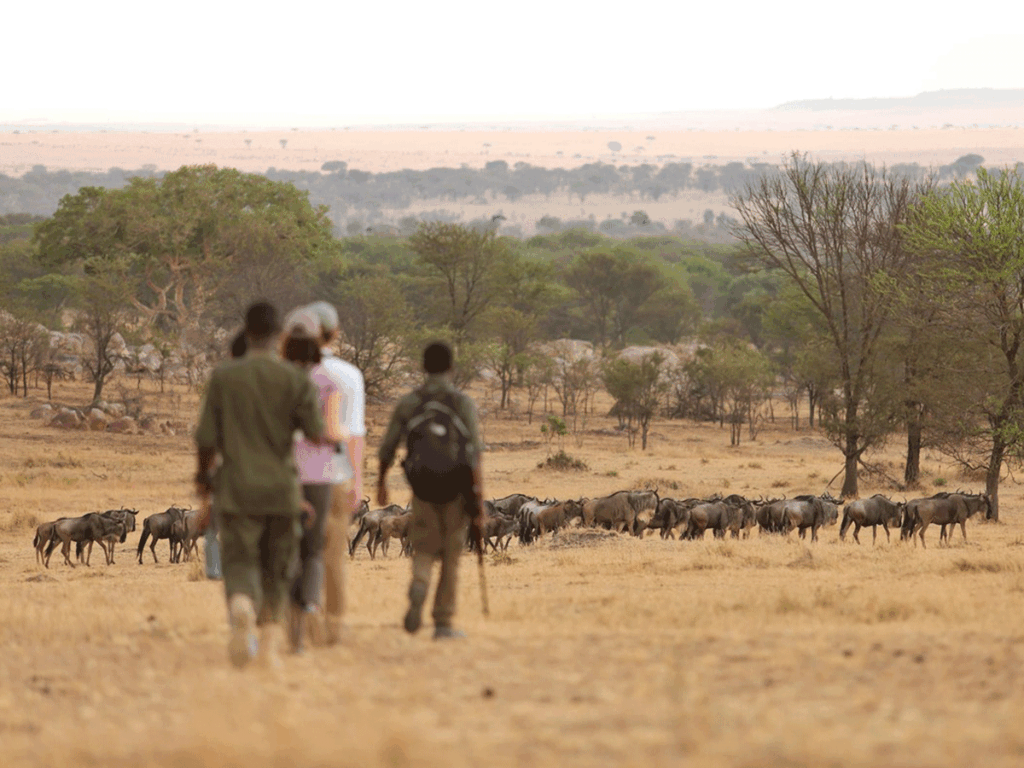
Kenya is also a paradise for birdwatchers, with over 1,100 recorded species. From the striking lilac-breasted roller Kenya’s national bird to pelicans at Lake Naivasha and flamingos at Lake Nakuru, the diversity is astounding. Even if you are not a dedicated birder, it is hard not to be captivated by the sheer variety of colors and calls that fill the air. Guides are skilled at spotting and naming species, turning even a casual safari-goer into an enthusiastic birdwatcher.
No safari to Kenya would be complete without a cultural visit to a Maasai or Samburu village. These visits provide travelers with a glimpse into the daily lives of Kenya’s most famous pastoralist communities. You’ll be welcomed with traditional dances, invited into homesteads built from mud and sticks, and shown the beadwork that is both decorative and symbolic. For U.S. visitors, this cultural exchange often becomes a powerful reminder that a safari is not just about the animals it is about people too.
Finally, many American travelers choose to end their safari with a coastal extension. After days of adventure in the bush, the white sands and turquoise waters of Kenya’s coast offer the perfect place to relax. Diani Beach, Mombasa, and Malindi are perennial favorites, while Zanzibar across the border combines Swahili history with spice tours and palm-fringed beaches. Whether snorkeling over coral reefs, exploring old coastal towns, or simply unwinding with a cocktail at sunset, the coast is the ideal counterbalance to the intensity of a safari.
These activities beyond game drives enrich the safari experience, ensuring that every day in Kenya offers something new and extraordinary. They provide moments of awe, intimacy, and culture that transform a safari from a wildlife holiday into a journey of discovery one that stays in the hearts of U.S. travelers long after they return home.
Best Time to Visit Kenya for U.S. Travelers
One of the most important decisions when planning Kenya safari holidays from USA is choosing the right time of year to travel. Kenya is a year-round destination thanks to its diverse landscapes and wildlife-rich parks, but the timing of your safari can dramatically influence what you see, how comfortable your experience is, and even how much you pay.
For wildlife enthusiasts, the dry seasons from June to October and January to February are the most popular times to visit. During these months, the skies are generally clear, the weather is warm but not too humid, and animals gather around the remaining water sources, making them easier to spot. This is also the time when the legendary Great Wildebeest Migration reaches the Masai Mara, usually between July and October. Witnessing thousands of wildebeest and zebras cross the Mara River often pursued by hungry crocodiles and big cats is one of the most dramatic wildlife spectacles on Earth. Not surprisingly, many Americans plan their Kenya safari holidays specifically around these months.
The green seasons in March to May and November tell a different story. These periods are marked by rainfall, particularly the long rains from March to May. While some U.S. travelers avoid this season, it can be surprisingly rewarding. The landscapes turn lush and green, birdlife explodes with activity, and newborn animals are often spotted in abundance. Another major benefit is cost: lodges and camps often offer discounted rates, and parks are less crowded, giving you a more private experience. For photographers, the green season provides dramatic skies and vibrant scenery, perfect for capturing Kenya’s natural beauty.
When considering the timing, it also helps to align your safari with U.S. travel holidays and schedules. Families often plan safaris around the summer vacation months of June through August, which coincidentally align with the Great Migration. Couples or honeymooners may prefer to travel in January or February, when the weather is dry and skies are clear, making it ideal for both wildlife and romantic experiences like hot air balloon safaris. Others choose to visit during the Christmas holiday season, combining the festive break with a once-in-a-lifetime safari and perhaps a beach extension in Diani or Zanzibar.
It is important to note that while Kenya is on the equator, the climate varies with altitude and region. Nairobi and the highland areas are generally cooler, while the coast remains warm and humid year-round. Packing appropriately for your travel season ensures a comfortable safari.
In the end, there is no single “best” time to visit Kenya it depends on your personal priorities. If you want the most dramatic wildlife action, July to October is unbeatable. If you prefer fewer crowds and lower costs, the green seasons may be more appealing. And if your main goal is to escape the American winter for a dose of sunshine and adventure, January and February are ideal. Whatever you choose, Kenya’s landscapes, wildlife, and people ensure that every season offers something extraordinary.
Best Time to Visit Kenya for U.S. Travelers
One of the most common questions U.S. travelers ask when planning Kenya safari holidays from USA is: “When is the best time to go?” The answer depends on what kind of safari experience you are hoping for, but the good news is that Kenya is a fantastic destination year-round. Its position along the equator ensures relatively stable weather and abundant wildlife throughout the year, though each season offers its own advantages.
The dry seasons from June to October and from January to February are considered the peak times for safari. These months bring clear skies, warm days, and little rainfall. The vegetation is thinner, water sources are fewer, and this makes animals easier to find as they gather around rivers and swamps. For many Americans, this period coincides perfectly with summer vacations and winter escapes, making it convenient as well as rewarding. The highlight of the dry season is undoubtedly the Great Wildebeest Migration, which typically reaches the Masai Mara between July and October. Watching hundreds of thousands of wildebeest, zebras, and gazelles attempt river crossings while predators lurk nearby is one of the most dramatic wildlife events on the planet. Many U.S. travelers plan their trips specifically to witness this natural wonder.
By contrast, the green seasons in March to May and in November bring heavier rains, especially during the long rains of April and May. While some travelers shy away from these months, they can be surprisingly rewarding. The rains transform the plains into lush, emerald landscapes that are stunning for photography. Birdwatching is at its best, as migratory species arrive and resident birds nest in abundance. Wildlife is still present Kenya’s parks are never empty and the added bonus is fewer tourists and lower prices. Lodges and camps frequently offer discounts during this time, making it an appealing option for budget-conscious U.S. visitors who prefer a quieter, more exclusive safari.
Another factor for Americans to consider is how Kenyan seasons align with U.S. holidays. Summer break (June through August) is the perfect opportunity for families to embark on safaris without disrupting school schedules, and it conveniently overlaps with the migration season. Couples often choose January or February, escaping the cold back home for Kenya’s sunny, dry weather and crisp skies ideal for romantic getaways or honeymoons. The Christmas and New Year holiday period is also popular, combining festive celebrations with a safari and perhaps a beach escape to Diani or Zanzibar.
Regional variations in climate also play a role. Nairobi and Kenya’s highlands are cooler due to their elevation, while the coast remains hot and humid year-round. Amboseli and Tsavo can be dry and dusty during the peak dry season, whereas the Mara maintains lush grazing land for much of the year. Being aware of these nuances helps U.S. travelers pack appropriately and set realistic expectations.
Ultimately, there is no single “best” time that suits every traveler. If your dream is to witness the migration and dramatic predator action, plan for July through October. If you prefer lower crowds, greener scenery, and great value, the shoulder and rainy seasons are ideal. For a quick winter escape from the United States, January and February offer perfect weather. No matter the month, Kenya delivers unforgettable encounters with wildlife and landscapes that leave visitors spellbound.
Kenya Safari on a Budget from the USA
A safari in Kenya often feels like the adventure of a lifetime, but many U.S. travelers are pleasantly surprised to discover that it doesn’t always have to come with a sky-high price tag. With careful planning and the right choices, Kenya safari holidays from USA can be tailored to suit different budgets, allowing you to enjoy the magic of the wilderness without overspending.
One of the most effective ways to save money is by joining a group safari instead of booking a fully private tour. Shared safaris reduce the cost of vehicles, guides, and logistics while still offering rich wildlife experiences. For American travelers who don’t mind meeting others along the journey, this option keeps expenses down while adding a social element to the adventure. Solo travelers especially find group safaris both affordable and fun, as they meet like-minded adventurers from all over the world.
Another factor that significantly impacts cost is the mode of transport between parks. Road safaris are generally more budget-friendly than flying safaris. While road transfers may take longer often four to six hours between destinations they are part of the adventure, passing through rural villages, small towns, and scenic landscapes. Flying safaris, though faster, can be considerably more expensive, so many cost-conscious travelers choose road journeys and save air transfers for longer distances or return legs.
Accommodation also plays a big role in affordability. While Kenya boasts luxurious safari lodges with five-star services, it also offers plenty of budget-friendly options, from basic tented camps to community-run eco-lodges near park gates. These may not have infinity pools or gourmet dining, but they often provide the same access to wildlife and a closer connection to nature. For some travelers, waking up to the sound of lions roaring outside a simple tent is even more thrilling than staying in a high-end lodge.
Traveling during the low season, especially in April, May, and November, can also stretch your safari dollar further. Lodges and camps often reduce their rates, and package deals become more common. While rains are heavier in April and May, safaris remain possible, and the lush green landscapes are breathtaking. November, with its short rains, often brings quick showers followed by bright skies, and wildlife viewing remains excellent. U.S. travelers who can be flexible with their schedules often find that these shoulder seasons offer the best value.
Finally, booking early and working with reputable safari operators helps secure better deals and ensures smooth planning. Many U.S. visitors combine a mid-range safari with a few budget nights or mix and match destinations to balance cost and comfort. By prioritizing the parks you most want to see — for example, focusing on the Masai Mara and Amboseli — and skipping extras that don’t matter as much to you, it’s possible to craft an unforgettable safari without breaking the bank.
Budget-conscious travelers from the USA often return home surprised at just how accessible a safari can be. With elephants walking across the plains, lions roaring at night, and Kilimanjaro rising in the distance, the memories are just as powerful whether you stayed in a luxury lodge or a modest camp. In Kenya, the real luxury is being surrounded by nature’s greatest spectacle, and that is something every traveler can enjoy.
Family Safaris in Kenya for U.S. Travelers
Kenya is one of the most family-friendly safari destinations in Africa, making it an excellent choice for U.S. families seeking an adventure that blends education, culture, and wildlife. Parents often worry about whether children will enjoy or handle a safari, but in Kenya, the balance of compact parks, diverse activities, and family-oriented lodges ensures that young travelers remain engaged and comfortable.
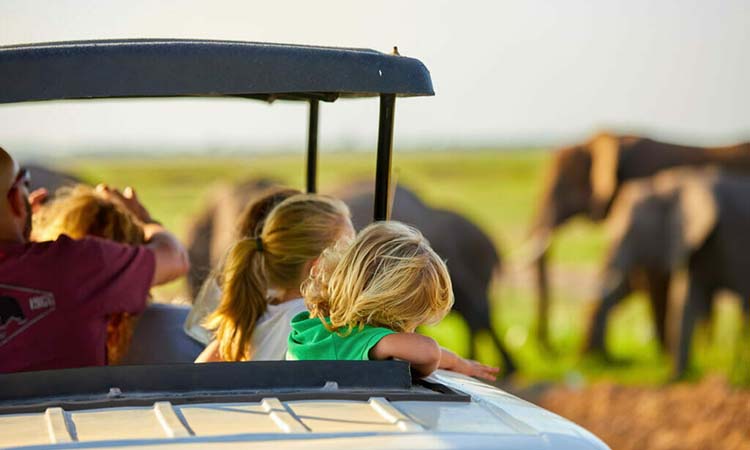
For American families planning Kenya safari holidays from USA, one of the biggest draws is the accessibility of the parks. Amboseli National Park, for instance, is relatively small and easy to navigate, with short game drives that keep children from getting restless while still providing exciting wildlife sightings. Here, kids can watch elephants wade through swamps with Mount Kilimanjaro towering in the background a sight that excites travelers of all ages. The Masai Mara is another favorite, offering big cat sightings and vast herds of wildlife that feel straight out of a nature documentary. Meanwhile, Lake Nakuru National Park is compact yet rewarding, known for its rhinos and flocks of flamingos, which fascinate children.
Many lodges and camps across Kenya are specifically designed with families in mind. Properties such as Sarova, Serena, and select Sopa lodges offer family-sized rooms or interconnecting tents, swimming pools for relaxation between game drives, and menus that cater to younger palates. Some camps even provide junior ranger programs, where children can learn about animal tracking, birdwatching, and conservation in fun, interactive ways. These activities add a layer of education that goes beyond what kids can find in textbooks, creating an experience that is as enriching as it is entertaining.
Cultural interactions are another highlight of family safaris. Visits to Maasai or Samburu villages introduce children to new perspectives on life, showing them how other communities live in harmony with nature. Watching traditional dances, trying beadwork, or visiting a Maasai manyatta (homestead) sparks curiosity and helps young travelers appreciate cultural diversity in a way that classroom lessons cannot replicate. For many U.S. parents, this is one of the most rewarding aspects of bringing children on safari watching them broaden their worldview through authentic encounters.
Safety and comfort are always top priorities for families, and Kenya’s safari infrastructure is well-prepared. Guides are experienced in handling family groups, tailoring drives to the attention spans of children and ensuring they are safe at all times. Game drives can be shortened for younger children, while older kids and teens often enjoy longer drives or additional activities like nature walks in conservancies. For families traveling with very young children, private vehicles are often recommended so schedules can be flexible.
For U.S. families, the memories made in Kenya often become stories retold for years. Imagine a child’s excitement at seeing a lion cub playfully chasing its mother’s tail, or their wide-eyed wonder at spotting a giraffe for the first time. These experiences not only create unforgettable family moments but also plant seeds of appreciation for wildlife and conservation in the next generation.
In short, Kenya is an ideal destination for family safaris. With compact parks, family-friendly accommodations, engaging cultural experiences, and guides who are experts at working with children, American families find that Kenya strikes the perfect balance of adventure and comfort. A safari here is more than just a holiday — it is an educational journey that strengthens family bonds and leaves every member, young and old, inspired by the magic of Africa.
Honeymoon & Romantic Safaris from the USA
For couples planning Kenya safari holidays from USA, the country offers some of the most romantic safari experiences on the continent. Few places in the world provide the same combination of breathtaking landscapes, luxury lodges, private game drives, and secluded moments under African skies. It is no wonder that Kenya has become a favorite destination for honeymoons, anniversaries, and romantic getaways.
The magic begins with the lodges themselves. Kenya is home to some of Africa’s most exquisite safari retreats designed with couples in mind. In the Masai Mara, properties like Angama Mara and Mahali Mzuri set the stage for unparalleled romance, with sweeping views over the savannah, spacious tented suites, and private verandas where couples can watch the sunset together. In Amboseli, lodges such as Ol Tukai Lodge offer rooms with stunning views of elephants crossing the plains with Mount Kilimanjaro rising in the distance a scene that feels like it belongs on a honeymoon postcard. On the Kenyan coast, resorts in Diani Beach or Malindi provide the perfect barefoot luxury after days of safari adventure, blending romance with relaxation.
Romantic safaris are also defined by the intimate experiences they offer. Couples often begin the day with a sunrise hot air balloon ride over the Masai Mara, drifting silently above the plains as wildlife stirs below and the horizon glows with golden light. After landing, a champagne breakfast awaits in the bush — one of the most iconic romantic touches you can experience in Africa. In the evenings, many lodges organize private sundowners, where couples sip cocktails while watching the sun sink over acacia-dotted landscapes. For those celebrating honeymoons or anniversaries, bush dinners under the stars, complete with lanterns, fine dining, and Maasai dancers, create memories that last a lifetime.
Kenya also lends itself to romantic combinations of safari and beach. Many couples from the United States choose a 2–3 day safari in Amboseli or the Mara before flying to Diani Beach or Zanzibar for a few days of relaxation. This bush-and-beach experience is incredibly popular because it blends adventure with intimacy: mornings spent spotting lions and elephants, followed by evenings strolling barefoot along a palm-fringed shoreline.
Privacy is another aspect U.S. couples value when traveling such a long way. Many lodges offer secluded honeymoon suites, private plunge pools, and the option to book exclusive-use vehicles for game drives. This ensures that the safari is not only filled with adventure but also with moments of connection and tranquility. Couples who opt for private conservancies enjoy even more freedom, including night drives, walking safaris, and fewer crowds.
For American couples, the allure of Kenya lies in the combination of raw wilderness and refined luxury. You can watch a pride of lions on the hunt in the morning, enjoy a spa treatment in the afternoon, and end the evening with a candlelit dinner overlooking the savannah. It is this seamless blend of thrill and intimacy that makes Kenya one of the most romantic destinations in the world.
In short, Kenya safari holidays from USA are not just for adventurers — they are also perfect for lovers. Whether it is your honeymoon, an anniversary, or simply a romantic escape, Kenya provides the settings, experiences, and memories that turn an African safari into the trip of a lifetime.
Wildlife Experiences in Detail
One of the greatest appeals of Kenya safari holidays from USA is the chance to witness some of the most iconic wildlife encounters on the planet. Kenya is home to the Big Five lions, leopards, elephants, buffaloes, and rhinos and spotting them is often at the top of every American traveler’s safari bucket list. The beauty of Kenya is that it delivers these sightings not in isolation but as part of a vibrant ecosystem filled with drama, diversity, and constant surprises.
In the Masai Mara, lions are abundant, and it is common to see entire prides lounging in the grass or stalking prey across the plains. Leopards, elusive and solitary, can often be spotted draped across the branches of acacia trees, particularly in the Mara and Samburu regions. Elephants roam in large herds in Amboseli, where the backdrop of Mount Kilimanjaro creates an unforgettable photographic moment. Buffaloes are widespread and often seen grazing in large numbers, while rhinos, though rarer, can be found in protected areas such as Lake Nakuru National Park and Ol Pejeta Conservancy.
For many U.S. travelers, the Great Migration is the defining wildlife experience in Kenya. Between July and October, more than a million wildebeest and hundreds of thousands of zebras and gazelles thunder into the Masai Mara from Tanzania’s Serengeti in search of greener pastures. River crossings are the most dramatic moments, with animals braving strong currents and the lurking jaws of crocodiles, while predators like lions and cheetahs wait on the banks. Witnessing this natural phenomenon is often described as a once-in-a-lifetime experience, and it is no surprise that many Americans time their safaris specifically to coincide with the migration.
Beyond the Big Five and the migration, Kenya is teeming with wildlife that makes every game drive exciting. Giraffes gracefully wander the plains, zebras graze in herds, and wildebeests create endless motion across the savannah. Hippos and crocodiles dominate the rivers, while hyenas and jackals add drama to predator-prey interactions. For bird lovers, Kenya is paradise with over 1,100 recorded bird species, including flamingos painting Lake Nakuru pink, crowned cranes dancing in Amboseli swamps, and the dazzling lilac-breasted roller, a favorite among photographers.
What makes wildlife experiences in Kenya so remarkable is not just the sightings themselves but the context in which they unfold. Watching a cheetah sprint across the plains at dawn, hearing the deep roar of a lion echo through the night, or locking eyes with a curious elephant calf leaves an impression that transcends the moment. For U.S. visitors, these encounters often become the stories they tell long after returning home stories of wild beauty, survival, and connection to a world beyond the ordinary.
In Kenya, wildlife is not seen through the bars of a zoo enclosure or in the pages of a book. It is experienced in its raw, natural form unpredictable, thrilling, and deeply moving. This is why American travelers who embark on a safari here often describe it as transformative. The animals, landscapes, and sheer vitality of life in Kenya create a sense of wonder that stays with you forever.
Travel Logistics: Getting Around Kenya
Once you’ve made the long flight from the United States, one of the first questions you’ll face during Kenya safari holidays from USA is how to travel between the country’s incredible safari destinations. With parks spread across different regions, your choice of transport whether by road, air, or a mix of both — will influence not just your comfort, but also how much time you spend in the wilderness.
For many Americans, road safaris are part of the adventure. Traveling by 4×4 safari vehicle allows you to see more of the countryside, passing through small towns, farms, and rural villages on the way to the parks. A drive from Nairobi to the Masai Mara takes around five to six hours, while Amboseli is about four to five hours away. These journeys can be bumpy, especially once you leave paved highways, but they are also scenic and immersive. Watching the landscape shift from rolling hills to endless savannahs makes the journey feel like an extension of the safari itself. Families often appreciate road trips because they give children a chance to see daily life in Kenya beyond the national parks.
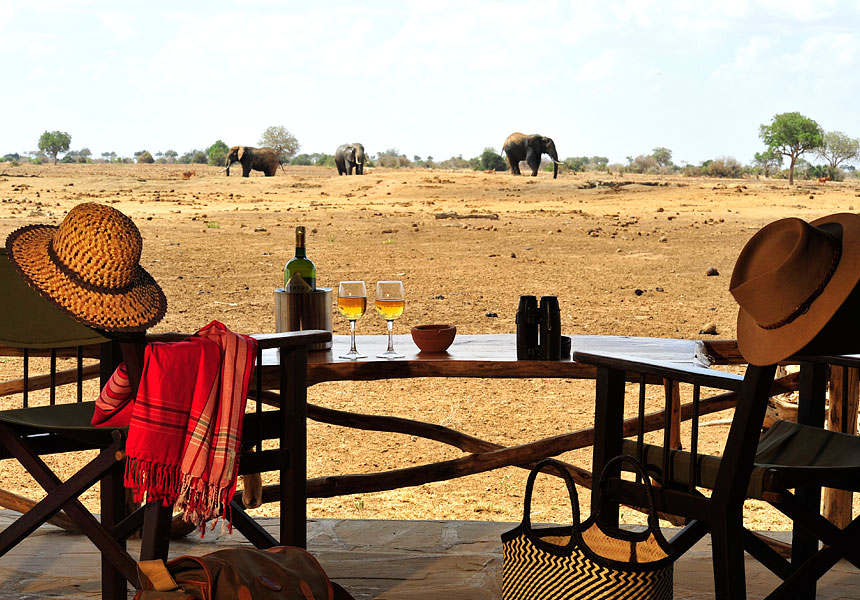
For travelers short on time or seeking extra comfort, domestic flights offer a quicker and smoother option. Local airlines such as Safarilink, AirKenya, and Kenya Airways operate scheduled flights from Nairobi’s Wilson Airport directly to airstrips inside or near the major parks. A flight to the Masai Mara takes just about an hour, while Amboseli can be reached in 45 minutes. Flying saves hours on the road and maximizes time for game drives, which is particularly valuable for U.S. visitors who may only have a week to ten days in Kenya. Many luxury safari packages for Americans include flights between destinations to ensure a seamless experience.
A combination of both road and air travel is common. Some travelers choose to drive one way — experiencing the scenery and stopping along the way then fly back to Nairobi or onward to the next park. This hybrid approach balances cost, comfort, and time efficiency, making it especially appealing for American visitors who want the best of both worlds.
The most popular safari circuits for U.S. travelers include Nairobi–Masai Mara–Amboseli–Coast, or Nairobi–Mara–Lake Nakuru–Naivasha–Amboseli. These routes are designed to showcase Kenya’s diversity, from predator-rich savannahs to rhino sanctuaries, birding lakes, and eventually the turquoise waters of the Indian Ocean. Some Americans also extend their journey into Tanzania, combining Kenya’s Masai Mara with Tanzania’s Serengeti for a migration-focused itinerary.
Logistics are made easier by Kenya’s well-developed safari infrastructure. Tour operators arrange vehicles, transfers, and flights, meaning U.S. travelers rarely need to worry about planning the details themselves. Guides and drivers are experienced, not just in navigation but also in ensuring guests’ comfort during long journeys. For those booking custom itineraries, private vehicles and charter flights are available, offering maximum flexibility and privacy.
In the end, your choice of transport depends on how much time you have and the kind of experience you want. Road journeys add adventure and cultural immersion, while flights maximize time on safari. Most American travelers find that combining the two provides the best balance a chance to see Kenya both from the ground and from the sky, creating a fuller, richer picture of the country’s landscapes and wildlife.
Real Client Stories & Experiences
Nothing brings the spirit of a safari to life quite like the experiences of real travelers. For many Americans who embark on Kenya safari holidays from USA, the stories they return home with are as vivid as the photographs they capture. These first-hand accounts reflect the diversity of experiences Kenya offers, from whirlwind adventures to extended journeys that span multiple parks and even neighboring countries.
Take the example of a family from California who planned a seven-day safari to coincide with their children’s summer vacation. Their itinerary included the Masai Mara and Amboseli, and although they were initially worried about whether their kids would get restless, those fears quickly vanished. The children were thrilled at every turn watching elephants splash in Amboseli’s swamps, spotting cheetahs on the hunt in the Mara, and visiting a Maasai village where they danced with local children. The parents described the trip as not only entertaining but also deeply educational, a journey that opened their children’s eyes to conservation and culture in ways a classroom never could.
For a couple from New York, Kenya was the dream honeymoon destination. They opted for a ten-day itinerary, starting in the Mara, moving on to Lake Naivasha, and ending with a beach retreat in Diani. Their highlights included a sunrise hot air balloon flight over the Mara, where they toasted their new life together with champagne while watching the plains come alive below. Evenings brought private bush dinners set under a canopy of stars, with lanterns glowing and the sounds of the savannah creating a soundtrack for romance. Their beach extension gave them the perfect contrast — lazy afternoons by the turquoise ocean after days filled with game drives. For them, Kenya was the ideal blend of adventure and intimacy.
Adventure seekers often plan longer safaris, and a group of friends from Texas exemplified this with their twelve-day expedition across Kenya. They began in Samburu, where they saw rare species such as the Grevy’s zebra and reticulated giraffe, before continuing to Ol Pejeta Conservancy to view rhinos up close. The journey then took them to the Masai Mara for the Great Migration, where they witnessed wildebeest river crossings that left them speechless. They ended their trip in Amboseli, photographing elephants with Kilimanjaro as the backdrop. What they valued most was the sheer variety of landscapes and wildlife Kenya offered in under two weeks.
These stories reflect the adaptability of Kenya safaris to different travelers. Families, couples, and groups of friends all find that the country delivers exactly what they are looking for — whether that’s bonding time, romance, or thrilling adventure. The common theme among American visitors is a sense of awe. Whether it’s the California kids seeing lions for the first time, the New York honeymooners floating in a balloon, or the Texans marveling at rhino conservation efforts, each traveler returns home transformed by Kenya’s magic.
For many, the experience is described as life-changing. The vast skies, the roar of lions at night, the warmth of Kenyan hospitality, and the reminder of how interconnected life on earth truly is — all combine to create memories that go far beyond a typical holiday. These are the kinds of stories U.S. travelers share for years, inspiring friends and family to follow in their footsteps.
Recommended Safari Extensions Beyond Kenya
While Kenya offers enough diversity to fill any itinerary, many U.S. travelers planning Kenya safari holidays from USA choose to extend their adventure beyond the country’s borders. East Africa is a region of immense beauty and cultural depth, and with short flights or overland connections, it is easy to add neighboring destinations that complement a Kenyan safari perfectly.
One of the most popular extensions is Tanzania, home to the legendary Serengeti and the Ngorongoro Crater. Travelers who have witnessed the Great Migration in the Masai Mara often continue into Tanzania to see the other half of the migration route. Between December and March, the wildebeest gather in the Serengeti’s southern plains for calving season, where thousands of newborn calves take their first steps — and predators lurk nearby. The Ngorongoro Crater, with its lush floor enclosed by steep volcanic walls, is another must-see, offering some of the densest wildlife concentrations in Africa. For American travelers, the ability to combine Kenya and Tanzania creates a once-in-a-lifetime “migration safari circuit” that showcases nature at its most spectacular.
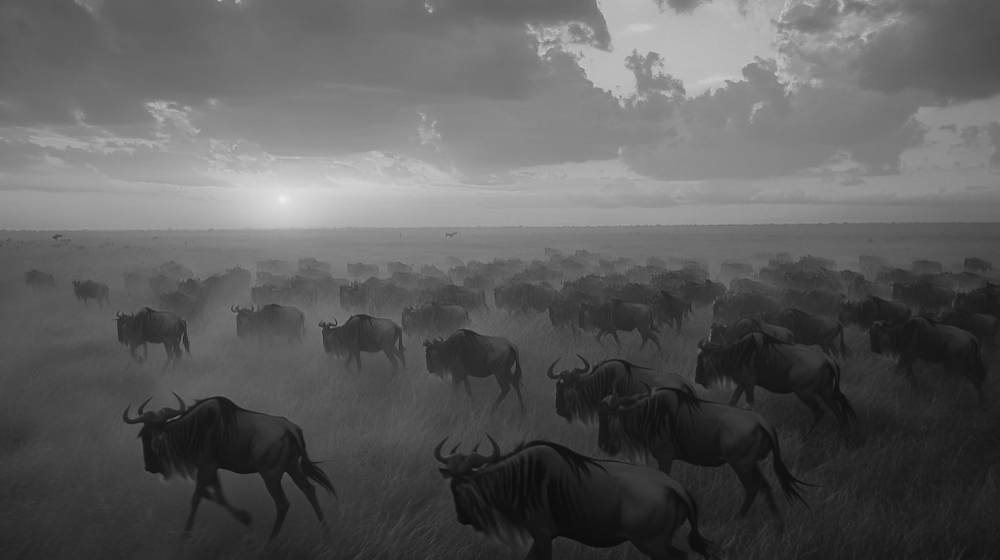
For those who want to add a unique primate experience, Uganda is a natural choice. A short flight from Nairobi takes you to Uganda’s Bwindi Impenetrable Forest, home to half of the world’s mountain gorilla population. Trekking through dense jungle to come face-to-face with a family of gorillas is an emotional and unforgettable experience. Many U.S. visitors describe it as life-changing, as the sheer intelligence and gentle nature of these primates create an intimate wildlife encounter unlike any other.
Similarly, Rwanda has become a popular extension for travelers interested in gorilla trekking. Volcanoes National Park offers easier access and a more polished tourism infrastructure, making it convenient for Americans on tighter schedules. A few days in Rwanda can easily be added after a Kenyan safari, and the country also offers rich cultural experiences and historical sites that deepen the journey.
For those who prefer to end their trip with relaxation, the Indian Ocean beaches are the perfect complement to Kenya’s savannahs. Many U.S. travelers fly from Nairobi to Diani Beach or Mombasa, where soft white sands and turquoise waters invite rest after days of game drives. The historic streets of Mombasa’s Old Town, the coral reefs of Malindi, and the vibrant Swahili culture add depth to a coastal escape. Others choose to cross into Zanzibar, where spice tours, Stone Town’s cultural heritage, and luxury beach resorts create the ultimate post-safari retreat. For honeymooners, this combination of safari and beach offers the best of both worlds — adventure followed by romance.
Some adventurous travelers even extend further into the Indian Ocean with trips to Seychelles or Mauritius. These island nations, accessible via connecting flights, provide world-class beaches, luxury resorts, and watersports, making them an ideal way to cap off an intense safari.
What makes these extensions so appealing to U.S. travelers is that they transform a great safari into a complete East African journey. In one trip, you can witness lions hunting in the Mara, gorillas in Uganda, flamingos in Lake Nakuru, and unwind by the ocean in Zanzibar. The convenience of regional flights and the expertise of tour operators make these combinations seamless, ensuring that every day adds something new and extraordinary.
For Americans who have already made the long journey across the Atlantic, adding a few extra days to explore beyond Kenya often feels like a natural choice. Whether it’s chasing the migration into Tanzania, trekking with gorillas, or lounging on white sandy beaches, these extensions turn a safari holiday into a once-in-a-lifetime East African adventure.
Final Thoughts: Planning Your Kenya Safari from the USA
For U.S. travelers, a safari in Kenya is more than just another holiday it is the chance to step into a world where nature still dominates, where lions roar under starlit skies, elephants cross open plains with Kilimanjaro as their backdrop, and where cultures rich in tradition welcome you with warmth and authenticity. Few journeys carry the same mix of adventure, discovery, and wonder. That is why Kenya safari holidays from USA are often described as once-in-a-lifetime experiences, the kind of trip that remains etched in your memory forever.
The key to planning the perfect safari lies in balancing your time, budget, and expectations. For most American travelers, seven to ten days is the sweet spot, allowing enough time to explore Kenya’s most iconic parks — the Masai Mara, Amboseli, and Lake Nakuru — while also including moments of relaxation, whether in Nairobi or along the Indian Ocean coast. Longer itineraries that stretch to two weeks or more open the door to even greater adventures, with extensions to Tanzania, Uganda, Rwanda, or exotic island escapes.
Flights from the U.S. to Kenya are long but increasingly accessible, with direct options from New York and convenient connections via Europe and the Middle East. The moment you arrive in Nairobi, the rhythms of the city and the promise of the wild begin to draw you in. From there, whether you journey by road through scenic countryside or soar above the plains in a bush plane, every step of the trip builds anticipation for what lies ahead.
Kenya caters to every kind of traveler families who want their children to learn about wildlife and culture in ways no classroom can teach, couples seeking the romance of balloon safaris and private sundowners, photographers chasing golden light and unforgettable backdrops, and adventurers who crave the thrill of the migration or rare encounters with rhinos and leopards. Whether you choose a luxury lodge with five-star service, a comfortable midrange camp, or a simple tented camp under the stars, the experience delivers the same heart-stopping moments of connection with the wild.
Planning ahead is crucial, especially if you hope to travel during the migration season, when lodges fill up quickly. Working with trusted safari operators ensures smooth logistics, reliable guides, and itineraries designed to maximize your time. Many Americans find that booking early not only secures better deals but also brings peace of mind, knowing that every detail from flights to park fees has been taken care of.
Ultimately, Kenya rewards those who give themselves the gift of time. Every sunrise game drive, every glimpse of a leopard in the trees, every quiet moment by a campfire listening to the night sounds of the bush adds another layer to the story of your journey. A Kenya safari is not just about ticking off animals from a checklist; it is about rediscovering a sense of wonder, reconnecting with nature, and creating memories that you will share with loved ones for a lifetime.
So, if you’ve ever dreamed of an African safari, now is the time to make it real. From the USA, Kenya is closer than you think and infinitely more rewarding than you can imagine. The savannahs are waiting, the migration is calling, and the adventure of a lifetime begins the moment you decide to go.

